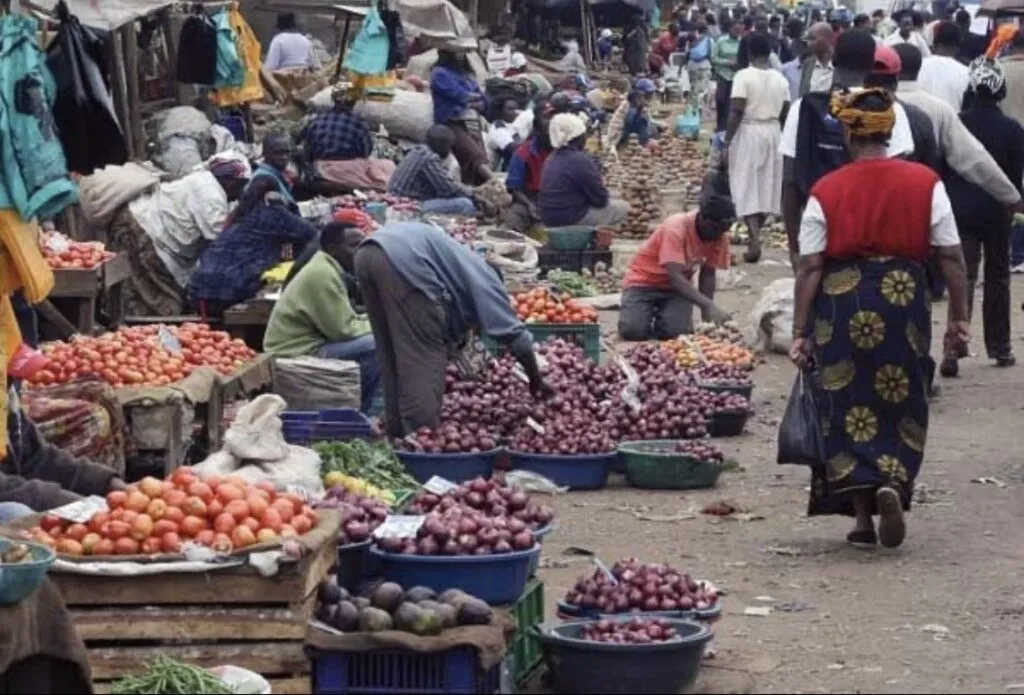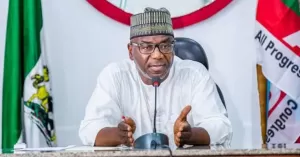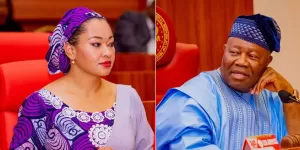Nigeria Isn’t the Third Fastest-Growing Economy: What You Need to Know

How The Nigerian Economy Affects Your Business
In recent years, optimistic narratives about Nigeria’s economic trajectory have occasionally surfaced, with some claiming the country ranks among the world’s fastest-growing economies. A specific assertion—that Nigeria is the third fastest-growing economy in 2025—has gained traction in certain circles, fueled by government messaging, selective data interpretations, or outdated projections. However, a closer examination of Nigeria’s economic performance reveals a more nuanced reality. While Nigeria’s growth is respectable, it does not place the country among the global top three. This article unpacks the facts, drivers, and challenges shaping Nigeria’s economy in 2025, offering a clear-eyed view of its position on the global stage.
Nigeria’s Economic Growth in 2025: The Numbers
According to the International Monetary Fund’s (IMF) April 2025 World Economic Outlook, Nigeria’s real GDP growth is projected at approximately 3.0% for 2025. Other institutions, such as the African Development Bank and the World Bank, offer slightly more optimistic estimates, ranging from 3.2% to 4.1%. These figures reflect a recovery driven by economic reforms, non-oil sector performance, and a modest uptick in oil production. In 2024, Nigeria’s GDP growth reached 3.4%, marking a three-year high, yet it remains below the 6% target set by President Bola Tinubu’s administration.
Globally, the fastest-growing economies in 2025 are expected to include India (projected at ~7%), China (~4.5–5%), and smaller economies like Guyana or Rwanda, which benefit from unique drivers such as oil discoveries or rapid industrialization. Nigeria’s 3.0–4.1% growth, while solid for a large and complex economy, does not place it in the top tier. Historically, Nigeria’s growth has averaged 2–3% annually, barely keeping pace with its population growth rate of ~2.5%. This context underscores why claims of Nigeria as the “third fastest-growing” economy are misleading.
Origins of the “Third Fastest” Claim
The notion that Nigeria ranks among the top three fastest-growing economies likely stems from a combination of outdated data, selective metrics, and optimistic government narratives. For instance, posts on X in 2023 referenced IMF projections suggesting Nigeria’s 3.2% growth for that year outpaced many developed economies, leading to inflated rankings. Such claims often focus on Nigeria’s position among African or emerging markets rather than globally, creating a skewed impression.
Nigeria’s status as Africa’s largest economy, with a GDP estimated between $188 billion and $500 billion (depending on exchange rate metrics), can also amplify perceptions of rapid growth when nominal figures are emphasized over percentage growth rates. Additionally, the Tinubu administration’s “Renewed Hope” agenda has spotlighted reforms like fuel subsidy removal and exchange rate unification, which have boosted government revenues and the current account surplus (projected at 3.6% of GDP in 2025). These successes are sometimes overstated in public communications, contributing to exaggerated growth narratives.
What’s Driving Nigeria’s Economy?
Despite not ranking among the global top three, Nigeria’s economy shows resilience and potential. Key drivers include:
1. Non-Oil Sector Growth
The non-oil sector, particularly services (finance, telecommunications, and entertainment), is the backbone of Nigeria’s growth. In Q1 2024, services contributed 58.04% to GDP, with the sector growing at 5.37% in Q4 2024. Agriculture and manufacturing also show modest gains, supported by government initiatives to diversify the economy away from oil dependency.
2. Oil Sector Recovery
Nigeria’s oil sector, which accounts for ~6% of GDP but over 80% of export earnings, has faced challenges, contracting by -3.83% in Q2 2024 due to OPEC+ production curbs and insecurity in the Niger Delta. However, new production from the Dangote refinery and efforts to curb oil theft are expected to boost output in 2025, supporting overall growth.
3. Economic Reforms
Since May 2023, the Tinubu administration has implemented bold reforms, including removing fuel subsidies and floating the naira. These measures have increased federal and state government revenues, with FAAC disbursements rising 91.6% from May 2023 to April 2024. The reforms have also attracted foreign investment and improved Nigeria’s current account balance, laying a foundation for medium-term growth.
Challenges Holding Nigeria Back
Despite these drivers, Nigeria faces significant hurdles that prevent it from achieving top-tier growth:
1. High Inflation
Inflation reached 34.6% in November 2024, driven by food price spikes, fuel costs, and naira depreciation (down 100% from October 2023 to October 2024). Projections for 2025 suggest inflation will remain elevated, between 20.7% and 31.6%, eroding purchasing power and exacerbating poverty.
2. Poverty and Inequality
Nigeria has the world’s second-largest poor population after India, with 38.9–56% of its 230 million people (87–104 million) living below the poverty line. Rural areas, in particular, see little benefit from urban-centric service sector growth, deepening inequality.
3. Structural Weaknesses
Insecurity (banditry, insurgency), chronic power shortages, and corruption (Nigeria ranks 145/180 on the 2023 Corruption Perception Index) deter investment and hinder industrial growth. Weak infrastructure further limits manufacturing, which is critical for job creation in a country where 3.5 million people enter the labor force annually.
4. Limited Job Creation
The manufacturing sector, a potential engine for employment, is projected to grow sluggishly in 2025. High unemployment and underemployment persist, with many Nigerians relying on the informal economy, which offers little stability.
Why Nigeria Isn’t in the Top Three
Nigeria’s 3–4% growth rate, while commendable, falls short of the 4% average projected for sub-Saharan Africa in 2025 and is far below the 6–7% needed to significantly reduce poverty or match population growth. Globally, smaller or more dynamic economies like Rwanda or Bangladesh often post higher growth rates due to focused reforms or niche industries, outpacing Nigeria’s broader but constrained economy. Additionally, Nigeria’s economic volatility—marked by currency instability, foreign exchange shortages, and oil dependency—makes its growth less predictable than that of diversified or stable economies.
Outlook for 2025
Looking ahead, Nigeria’s economic trajectory shows both promise and peril:
- Positive Prospects: Sustained reforms, increased oil production, and non-oil sector growth could push GDP growth to 4.1% by 2025, according to the World Bank. Stabilizing the naira and tapering inflation would further bolster recovery, attracting more foreign investment.
- Risks: Persistent inflation, insecurity, and policy inconsistencies (e.g., partial reinstatement of fuel subsidies) could cap growth. The manufacturing sector’s weakness and rural-urban disparities will limit inclusive development unless addressed.
- Strategic Priorities: Analysts emphasize the need for improved infrastructure, higher public revenues (currently <10% of GDP), and a revitalized manufacturing sector to boost competitiveness and job creation. A competitive naira and tighter monetary policy are also critical to stabilizing the economy.
A Critical Perspective
Official claims of rapid growth often serve political purposes, exaggerating the impact of reforms while downplaying structural challenges. The “third fastest” narrative may reflect selective optimism rather than economic reality. For most Nigerians, growth figures are overshadowed by lived experiences: soaring inflation, stagnant wages, and rising poverty create a sense of despair rather than “renewed hope.” Rural communities, in particular, remain disconnected from the service-driven gains concentrated in urban centers like Lagos and Abuja.
Nigeria’s potential remains undeniable. As Africa’s largest economy with a young, dynamic population and vast resources, it has the ingredients for transformative growth. However, without tackling corruption, insecurity, and infrastructure deficits, Nigeria will struggle to join the ranks of the world’s fastest-growing economies.
Conclusion
Nigeria is not the third fastest-growing economy in 2025. Its projected 3.0–4.1% GDP growth is a step forward but trails global leaders like India and China and falls short of the pace needed to address poverty and unemployment. Claims of top-tier growth likely stem from outdated projections, selective metrics, or government messaging. To unlock its potential, Nigeria must prioritize structural reforms, inclusive growth, and policies that translate economic gains into tangible improvements for its people. For now, the narrative of Nigeria as a global economic frontrunner remains more aspiration than reality.







